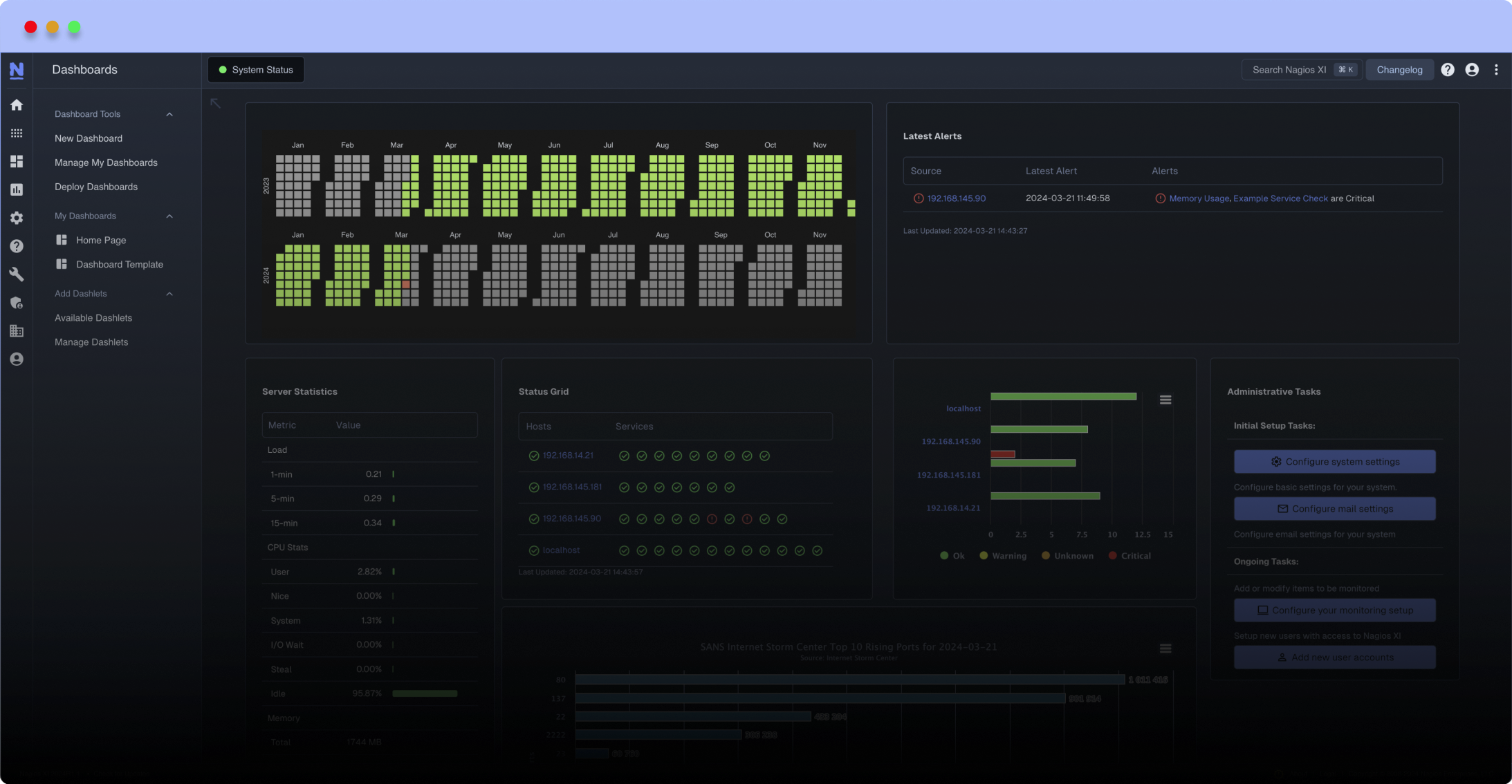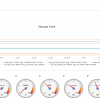Search Exchange
Search All Sites
Nagios Live Webinars
Let our experts show you how Nagios can help your organization.Login
Directory Tree
Check Linux file system use including xfs project quota.
Current Version
1.1
Last Release Date
2021-05-05
Compatible With
- Nagios XI
Owner
License
GPL
Hits
7992
Files:
| File | Description |
|---|---|
| check_disk_xfs_pquota.sh | Check Linux file system and xfs project quota use. |
Meet The New Nagios Core Services Platform
Built on over 25 years of monitoring experience, the Nagios Core Services Platform provides insightful monitoring dashboards, time-saving monitoring wizards, and unmatched ease of use. Use it for free indefinitely.
Monitoring Made Magically Better
- Nagios Core on Overdrive
- Powerful Monitoring Dashboards
- Time-Saving Configuration Wizards
- Open Source Powered Monitoring On Steroids
- And So Much More!
Check Linux file system use including xfs project quota.
File system use is determined via the command df. Therefore this plugin can be used on systems that do not support xfs file systems. Support for xfs file system project quota (pquota) is dependent on the command xfs_quota. When the plugin detects the presence of xfs_pquota it is used to determine pquota use.
File systems with the type tmpfs are excluded along with network file systems.
By default, with no options or arguments, the status of all file systems and pquotas are reported with warning level set at 80%, critical, 90%. Volumes are reported in human readable formats. Both space and inodes are reported.
When multiple file systems and pquotas (objects) are in the reporting scope either by supplying no arguments or multiple arguments the highest Nagios status of any object of the scope is reported along with a list of the objects that are in that state. Therefore with a scope of eight objects when all are below warning level the report will be OK and a list of all eight objects. When three objects of the scope are above warning level but under critical the report will be WARNING and the three objects listed. When two objects are above critical level the report will be CRITICAL and the two objects listed. Although the Nagios UNKNOWN status has a higher value than CRITICAL it is treated as if its value falls between OK and WARNING.
Graphing details are generated for each objects space details. Graphing of object inode details only occurs when reporting is restricted to inodes. As the graphing feature can not handle strings containing path separators ,‘/’, paths are munged converting ‘/’ to ‘_’. The root designator, ‘/’, when it occurs in isolation, is translated to the word ‘root’.
Options allow:
Reporting to be restricted to just space or inodes
Warning and critical levels for space and inodes to be customised
Volume reporting designations can be explicitly restricted to B, KB, MB, GB, or TB.
When an option is set multiple times the last occurrence is the set value. This applies to all options but for the following exceptions.
Reporting scope objects can be specified as an option, multiple times, or as multiple arguments.
Reporting scope exclusions can be specified as an option, multiple times.
Comments/Reasons
The objective of this plugin is to provide a single Linux disk check that can be applied to all systems regardless of their use or non use of xfs pquota. Likewise the default glob of all file systems and pquotas (objects) is to simplify deployment thus removing the need to identify and specify a check for each object. Options and arguments can be used if the preference is for explicit object checks.
The inclusion of xfs pquota grew from following best practice of isolating potential growth data sets. For example /var /var/log /var/log/audit /var/tmp. It was found that in a virtual system environment, using image backup technology, each file system would add 3 minutes, to mount and unmount, to the backup process. Folding these four file systems into /var, and using xfs pquota to control space use, shaved nine minutes off the backup time.
File system use is determined via the command df. Therefore this plugin can be used on systems that do not support xfs file systems. Support for xfs file system project quota (pquota) is dependent on the command xfs_quota. When the plugin detects the presence of xfs_pquota it is used to determine pquota use.
File systems with the type tmpfs are excluded along with network file systems.
By default, with no options or arguments, the status of all file systems and pquotas are reported with warning level set at 80%, critical, 90%. Volumes are reported in human readable formats. Both space and inodes are reported.
When multiple file systems and pquotas (objects) are in the reporting scope either by supplying no arguments or multiple arguments the highest Nagios status of any object of the scope is reported along with a list of the objects that are in that state. Therefore with a scope of eight objects when all are below warning level the report will be OK and a list of all eight objects. When three objects of the scope are above warning level but under critical the report will be WARNING and the three objects listed. When two objects are above critical level the report will be CRITICAL and the two objects listed. Although the Nagios UNKNOWN status has a higher value than CRITICAL it is treated as if its value falls between OK and WARNING.
Graphing details are generated for each objects space details. Graphing of object inode details only occurs when reporting is restricted to inodes. As the graphing feature can not handle strings containing path separators ,‘/’, paths are munged converting ‘/’ to ‘_’. The root designator, ‘/’, when it occurs in isolation, is translated to the word ‘root’.
Options allow:
Reporting to be restricted to just space or inodes
Warning and critical levels for space and inodes to be customised
Volume reporting designations can be explicitly restricted to B, KB, MB, GB, or TB.
When an option is set multiple times the last occurrence is the set value. This applies to all options but for the following exceptions.
Reporting scope objects can be specified as an option, multiple times, or as multiple arguments.
Reporting scope exclusions can be specified as an option, multiple times.
Comments/Reasons
The objective of this plugin is to provide a single Linux disk check that can be applied to all systems regardless of their use or non use of xfs pquota. Likewise the default glob of all file systems and pquotas (objects) is to simplify deployment thus removing the need to identify and specify a check for each object. Options and arguments can be used if the preference is for explicit object checks.
The inclusion of xfs pquota grew from following best practice of isolating potential growth data sets. For example /var /var/log /var/log/audit /var/tmp. It was found that in a virtual system environment, using image backup technology, each file system would add 3 minutes, to mount and unmount, to the backup process. Folding these four file systems into /var, and using xfs pquota to control space use, shaved nine minutes off the backup time.
Reviews (0)
Be the first to review this listing!


 New Listings
New Listings
